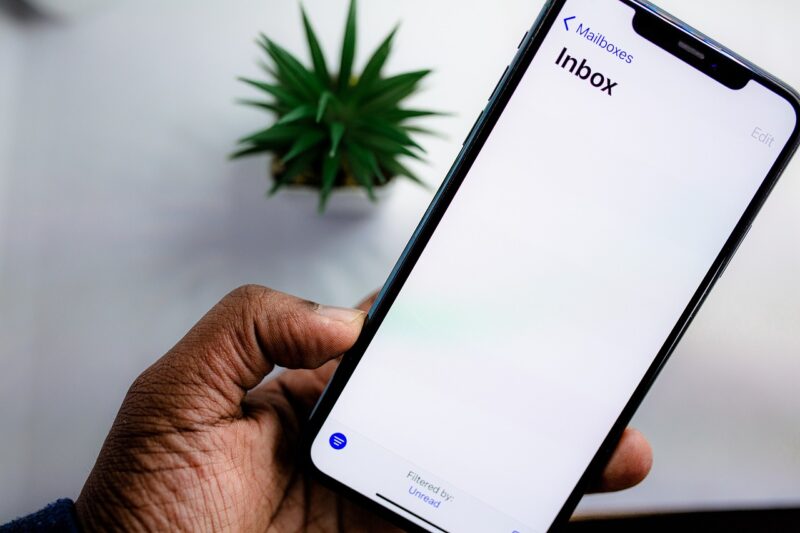How to Handle Email Overload with Productivity Hacks
November 11, 2024

In today’s fast-paced digital environment, managing email has become a daunting task for many professionals. With an endless influx of messages hitting our inboxes every day, email overload can quickly lead to stress, reduced productivity, and even burnout. But fear not! There are effective productivity hacks that can help you regain control over your email and use it as a tool for success rather than a source of anxiety.
1. Understanding Email Overload
Email overload occurs when you have too many messages to process effectively, often leading to missed deadlines, important communications falling through the cracks, and general frustration. Before diving into solutions, it’s essential to understand why this happens:
- High Volume of Correspondence: With numerous communication channels, the ease of sending emails has resulted in a significant increase in the volume of messages received every day.
- Priority Confusion: When everything seems urgent, it can lead to a struggle in differentiating between important and trivial emails.
- Poor Email Organization: Without a solid organization system, it’s easy to become overwhelmed by the clutter in your inbox and lose track of essential communications.
Understanding these factors is the first step toward conquering email overload and implementing practical productivity hacks.
2. Set a Designated Email Time
One of the most effective strategies to combat email overload is to establish dedicated times for checking and responding to emails. Instead of constantly monitoring your inbox throughout the day, consider these tips:
- Limit Your Checking Times: Set specific intervals—perhaps once in the morning and once after lunch—to check your email. This helps you avoid distractions and maintain focus on other tasks.
- Communicate Your Schedule: Let colleagues know when you will be available to respond to emails. This allows them to plan their communications better rather than expecting an immediate response.
- Use Out of Office Messages: When you need to concentrate deeply, consider setting an automated out-of-office message to inform senders that you’ll reply at a specified time. This can reduce incoming urgency and give you breathing room.
By controlling when you check your inbox, you can improve focus and reduce the overwhelming feeling of constant email notifications.
3. Prioritize with the Eisenhower Matrix
The Eisenhower Matrix is an effective prioritization tool that can also be applied to manage your emails. It helps you determine what to address immediately and what can be scheduled or delegated. Here’s how to utilize it:
- Create Four Categories:
- Urgent and Important: Respond immediately
- Important but Not Urgent: Schedule a time to respond
- Urgent but Not Important: Delegate to someone else
- Neither Urgent nor Important: Delete or archive
- Sort Your Emails: As you review your inbox, categorize each email into one of the four groups above to streamline your response approach.
- Take Action Based on Priority: Tackle emails in order of importance, leading with the urgent and important ones to ensure you address high-priority tasks first.
Implementing the Eisenhower Matrix helps you focus on necessary actions rather than getting lost in the abundance of emails.
4. Use Filters and Folders
Digital decluttering is critical in managing email overload. Leveraging filters and folders according to your needs can help keep your inbox organized:
- Set Up Filters: Automatically filter incoming emails based on criteria such as sender, subject line, or keywords. This re-routing allows you to separate essential emails from newsletters or notifications instantly.
- Create Folders: Organize emails into predefined folders (e.g., Work, Personal, Billing, Projects). This lets you focus on specific areas without sifting through an overflowing inbox.
- Unsubscribe from Unwanted Emails: Review your subscriptions and start unsubscribing from newsletters or promotions that no longer interest you to reduce email clutter over time.
By taking the time to streamline your inbox through filters and folders, you create a more manageable environment that reduces stress and increases efficiency in email handling.
5. Embrace the Two-Minute Rule
As you go through your emails, utilize the two-minute rule to manage small tasks effectively. If responding to or addressing an email takes less than two minutes, tackle it immediately instead of putting it off. This rule promotes:
- Swift Decision Making: By addressing quick tasks on the spot, you prevent them from piling up and becoming overwhelming later.
- Momentum Building: Completing minor tasks helps create a sense of accomplishment, motivating you to tackle larger projects.
Incorporating the two-minute rule encourages proactive email management while keeping your inbox clear of unnecessary clutter.
6. Consider Email Reply Templates
Repetitive email responses can eat up valuable time throughout the day. To streamline this process, consider creating email reply templates that can be utilized for common scenarios, including:
- Standard Responses: for frequent inquiries from colleagues or clients.
- Meeting Requests and Confirmations: to save time when scheduling.
- Follow-ups: to remind others about requests or pending actions without rewriting each message from scratch.
Having these templates on hand removes the mental load of drafting responses and allows you to reply quickly and efficiently to common situations.
7. Limit Notifications and Distractions
Finally, reducing distractions from incoming email notifications is crucial to maintaining focus on your tasks. Here’s how you can limit these interruptions:
- Turn Off Notifications: Disable email alerts on your device or only receive notifications for specific priority contacts or threads to avoid constant distractions.
- Use Do Not Disturb Mode: Keep your device in do not disturb mode during focused working hours to prevent any emails from interrupting your workflow.
- Create a Focused Work Environment: Designate time blocks where you can concentrate deeply without email interruptions, allowing you to complete projects more effectively.
Restricting notifications helps you maintain focus, resulting in improved productivity as you process emails without distraction.
Conclusion
Email overload can feel overwhelming, but with the right productivity hacks, you can regain control over your inbox. By setting designated email times, prioritizing tasks, utilizing filters, incorporating templates, and limiting distractions, you can transform your relationship with email into a more manageable and productive experience.
Remember, the key to handling email overload lies not in eliminating email altogether but in smartly managing it. Start implementing these productivity hacks today, and watch your email-related stress diminish as your productivity soars.








